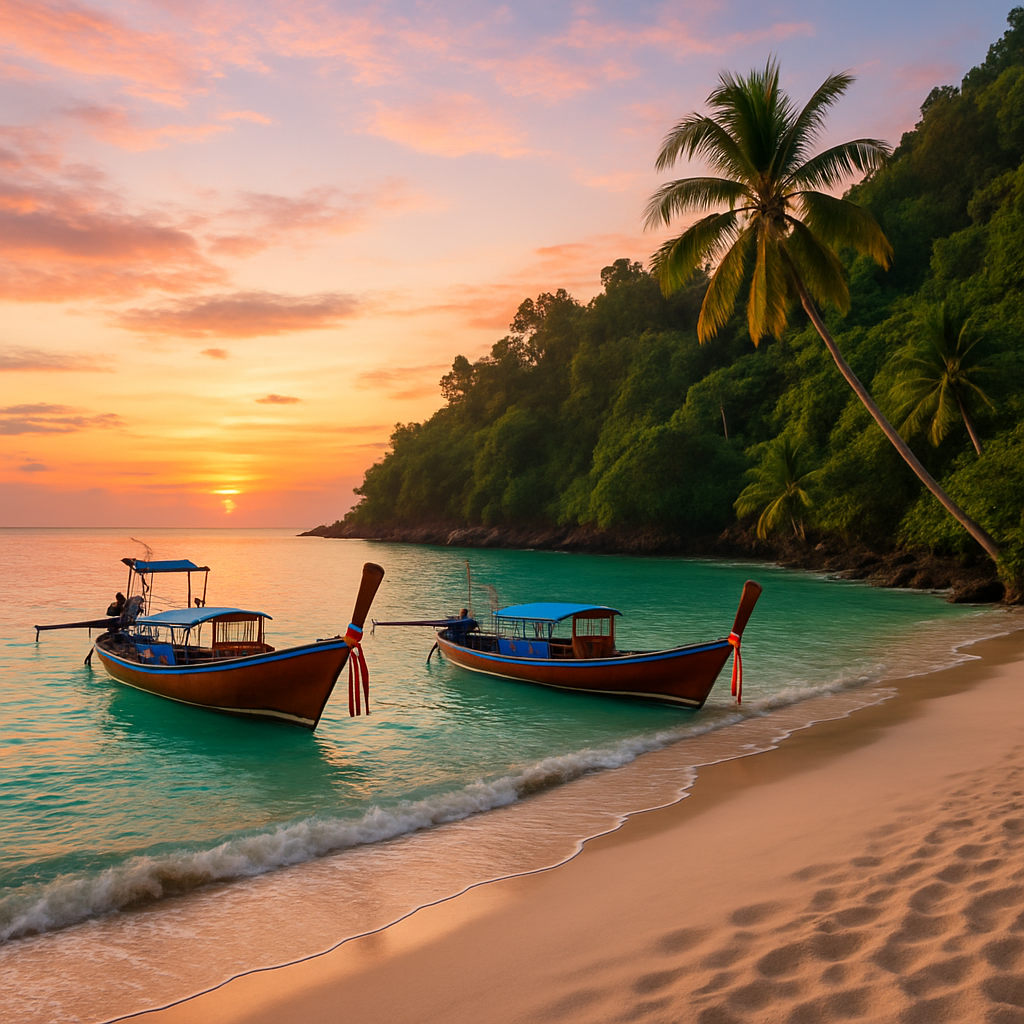
Beyond the typical tourist trails of Southeast Asia lie pristine landscapes and authentic cultural experiences that remain largely untouched by mass tourism. While Bali’s beaches and Bangkok’s temples draw millions of visitors annually, savvy travelers are increasingly seeking alternatives to these overcrowded destinations. The region holds countless hidden sanctuaries waiting to be discovered by those willing to venture off the beaten path.
Southeast Asia’s lesser-known destinations offer what many travelers seek but rarely find: genuine connections with local communities, unspoiled natural environments, and the thrill of discovery without the crowds. These places provide a glimpse into the region as it once was, before tourism transformed its most popular destinations.
Forgotten Paradises of the Philippines
The Philippines comprises over 7,000 islands, yet most tourists only visit a handful of them. Beyond the popular beaches of Boracay and Palawan lie countless undiscovered gems.
Siquijor Island blends natural beauty with mystical tradition. Local healers still practice traditional medicine, creating potions from herbs gathered under the full moon. The island’s waterfalls cascade into turquoise pools, and phosphorescent plankton illuminate the shoreline at night. Unlike nearby tourist hotspots, Siquijor maintains its authentic character while offering comfortable accommodations for travelers.
“We’ve had this healing tradition for generations,” a local healer told me while preparing a medicinal concoction. “Tourists come here for our beaches, but they leave understanding our connection to nature and spirit.”
Batanes, the northernmost province, feels more like the Scottish Highlands than tropical Asia. Stone houses with grass roofs dot rolling green hills that plunge dramatically into the sea. The Ivatan people have preserved their traditional lifestyle despite external influences. Their sustainable farming and fishing practices have remained largely unchanged for centuries.
What makes Batanes truly special is its isolation. Flights are frequently canceled due to weather, and rough seas sometimes cut the islands off completely. This unpredictability has protected it from overdevelopment. I once spent an unplanned extra week there when flights were canceled what initially seemed like an inconvenience became the highlight of my trip.
Myanmar’s Hidden Corners
Myanmar opened to tourism relatively recently, and while places like Bagan now attract crowds, much of the country remains unexplored by foreign visitors.
Loikaw in eastern Myanmar offers a window into the traditions of the Kayah and Kayan people. The famous “long-neck” women of the Kayan tribe live here, but unlike the contrived tourist villages in Thailand, these communities maintain authentic lifestyles. Responsible tourism initiatives allow visitors to experience local culture while ensuring benefits flow to the communities.
I stayed with a Kayah family in a village outside Loikaw. My host, a weaver named Ma Pyu, showed me how they create intricate textiles using techniques passed down through generations. “Before tourists came, we worried our children wouldn’t learn these skills,” she explained. “Now they see value in our traditions.”
Hpa-An, surrounded by karst mountains and caves, feels like stepping into a Chinese landscape painting. Buddhist shrines hide within enormous caverns, and rice paddies stretch to the horizon. Kyauk Ka Lat Pagoda perches precariously atop a limestone pinnacle rising from an artificial lake a sight that rivals better-known landmarks but without the crowds.
Laos Beyond Luang Prabang
Laos moves at a different pace than its neighbors. While Luang Prabang attracts tourists with its colonial architecture and morning alms-giving ceremony, much of the country remains blissfully quiet.
The 4000 Islands (Si Phan Don) in southern Laos epitomize slow living. The Mekong River splits into countless channels, creating a maze of islands where time seems suspended. On Don Khon and Don Det, locals travel by boat or foot, electricity runs sporadically, and the main activities are watching spectacular sunsets and spotting rare Irrawaddy dolphins.
During my stay on Don Khon, power outages were common. One night, without artificial light, the Milky Way appeared with stunning clarity. A local fisherman pointed out constellations I’d never seen before, using Lao names and stories unfamiliar to Western astronomy.
Phongsali Province in the far north borders China and Vietnam. The landscapes here feature terraced tea plantations that climb steep mountainsides, where members of the Akha, Yao, and Lisu ethnic groups maintain traditional lifestyles. The provincial capital sits at nearly 1,500 meters above sea level, making it one of the highest and coolest places in Laos.
The tea in Phongsali deserves special mention. Some trees are hundreds of years old, producing leaves with complex flavors prized by tea connoisseurs. Local producers still use traditional processing methods, creating unique varieties rarely found outside the region.
Cambodia’s Forgotten Temples
Cambodia’s tourism largely revolves around Angkor Wat, but the Khmer Empire built hundreds of temples throughout the country and neighboring regions.
Banteay Chhmar in northwestern Cambodia rivals Angkor in scale and beauty but receives perhaps 1% of the visitors. This massive complex features intricate bas-reliefs depicting scenes from Khmer mythology and history. Community-based tourism initiatives provide homestays and guided tours, ensuring preservation funds and tourism benefits reach local people.
I visited during the rainy season when the ancient stones were covered with moss and surrounded by lush vegetation. For several hours, I was the only visitor exploring the vast ruins. A local guide named Sokha showed me hidden carvings and explained their significance with knowledge passed down through generations of living alongside these ancient stones.
Preah Vihear Temple clings dramatically to a cliff on the Thai-Cambodian border. This UNESCO World Heritage site offers panoramic views across the Cambodian plains. Despite its magnificence, border disputes and remote location have kept visitor numbers low.
Indonesia Beyond Bali
Indonesia consists of over 17,000 islands, yet most tourists never venture beyond Bali. Those who do discover extraordinary places untouched by mass tourism.
The Banda Islands, once the world’s only source of nutmeg, feature pristine coral reefs and colonial architecture. Dutch and Portuguese traders fought bitterly over these tiny islands, building forts that still stand today. The waters surrounding the islands offer world-class diving with visibility often exceeding 30 meters and marine biodiversity that astonishes even experienced divers.
I spent a week on Banda Neira, the main island, staying in a 200-year-old colonial house converted to a guesthouse. Each morning, I snorkeled over coral gardens teeming with life, then explored historic sites in the afternoon. The local community maintains a delicate balance between preserving their heritage and developing sustainable tourism.
Sumba Island maintains indigenous animist traditions despite outside influences. The Pasola festival, where mounted warriors throw spears at each other, continues annually. Traditional villages feature distinctive high-peaked houses with megalithic tombs nearby. The island’s remote beaches offer world-class surfing without the crowds found in Bali.
Practical Considerations for Visiting Hidden Destinations
Traveling to less-visited places requires more preparation than typical tourist destinations. Infrastructure may be basic, English speakers fewer, and information less readily available. These challenges become part of the adventure for those seeking authentic experiences.
Transportation to remote areas often involves multiple connections and occasional delays. Flexibility with time becomes essential a scheduled two-day visit might extend to four due to weather or transportation issues. Building extra days into your itinerary allows for unexpected discoveries and complications.
Accommodations range from basic guesthouses to surprisingly comfortable eco-resorts. Many remote areas have developed community-based tourism initiatives that provide authentic experiences while ensuring benefits flow to local communities. These often offer the most meaningful connections with local people and cultures.
Learning a few phrases in local languages makes a tremendous difference in how you’re received. Even simple greetings open doors to experiences that remain closed to those who expect English everywhere. Locals appreciate visitors who demonstrate respect for their culture through appropriate dress and behavior, particularly at religious sites.
These hidden paradises won’t remain undiscovered forever. Growing interest in experiential travel and improving infrastructure gradually bring more visitors to once-remote destinations. Some places that qualified as “hidden gems” a decade ago now appear in guidebooks and social media feeds.
The most rewarding travel experiences often come from places without established tourist infrastructure or Instagram-famous landmarks. Southeast Asia’s true hidden gems offer something increasingly rare in our connected world: the genuine thrill of discovery and connection with places and people still living on their own terms, unaffected by the homogenizing forces of global tourism.

